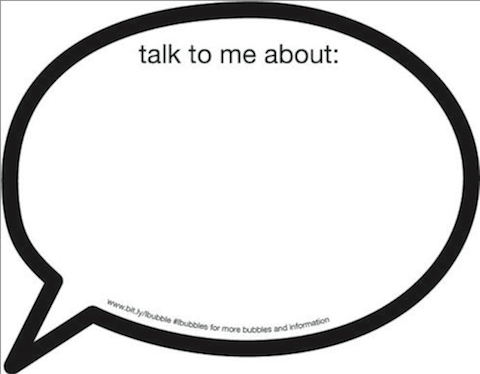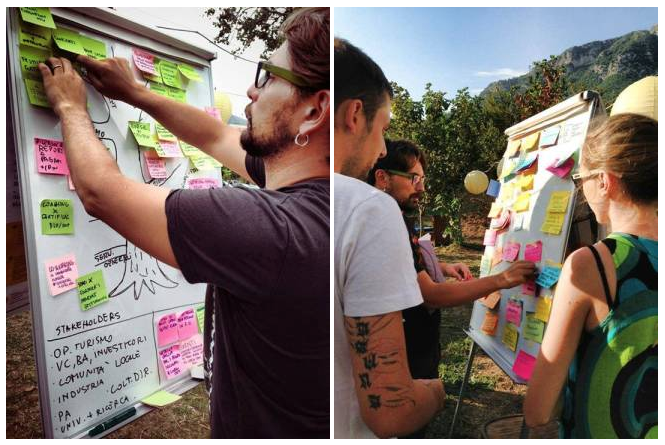Do you have an idea for a project or enterprise? Is the vision for it fleshed out? Here are five collaborative techniques that you can use to move your project forward.
Prune the Product Tree and The Metaplan. Photo by Societing.org.
Do you have an idea for a project or enterprise? Is the vision for it fleshed out? If the core idea is in place but the details remain a bit vague, how do you actualize it? Recently, Simone Cicero, the man behind the Meedabyte blog, detailed some of the ways that he and a group of workshop participants worked to clarify the vision for a new initiative he’s working on in Italy called RuralHub.
Over three-days, Cicero used several collaborative techniques to get people talking, sharing ideas, and thinking in new ways. Many of the techniques are based on design thinking, which, in contrast to analytic thinking, encourages creative brainstorming without judgement. This sets a tone of openness and generates unexpected solutions. Below are five collaborative techniques used in the RuralHub workshop that you can use to move your project forward.

Talk to Me Bubbles
This was originally a laptop exercise where event participants would tape a bubble to their laptop that said, “Talk to me about…”. People would fill in the blank, essentially inviting anyone to come talk with them about their shared interests. The exercise has evolved. One version of it has people wearing the bubbles on their backs, but the spirit of the game remains.
5 Minute Speed Dates
For this "speed dating" exercise, workshop participants were randomly paired up, while dancing to “energizing music” and asked the question, “What does RuralHub mean to you?” The results were compiled into a Metaplan mind map where they could be visualized and organized (see Metaplan below).
The Metaplan
A Metaplan is a visual representation of a loose brainstorm session. All the ideas are gathered (post-its work nicely for this) and categorized. From this, ideas and connections emerge that may not have been previously recognized.

A Motivation Matrix can help identify high power/high interest stakeholders. Photo: Gamestorming
Motivation Matrix
To use a motivation matrix, you first have to know who the stakeholders in your project are. Then you determine each stakeholder’s level of motivation in the project. In the case of the RuralHub project, participants were able to determine who the high-power, high-interest stakeholders are by plotting all of the stakeholders along an interest/impact matrix.
Prune the Product Tree
This exercise is a way to shape the vision for your project. Like pruning a tree, the idea is to create a balanced product that has a strong base and branches that can grow in the direction that users desire. Participants use an illustration of a tree to map core features and potential growth areas. This technique was used in the workshop to clarify what products and services RuralHub should provide.
These are just a few examples of collaborative exercises that can be used to move a project or idea forward. These and other exercises can be found at Gamestorming, an online collection of games designed to get creative results. Are there any collaborative techniques you’ve found particularly useful? Let us know in comments.
##
Follow @CatJohnson on Twitter









